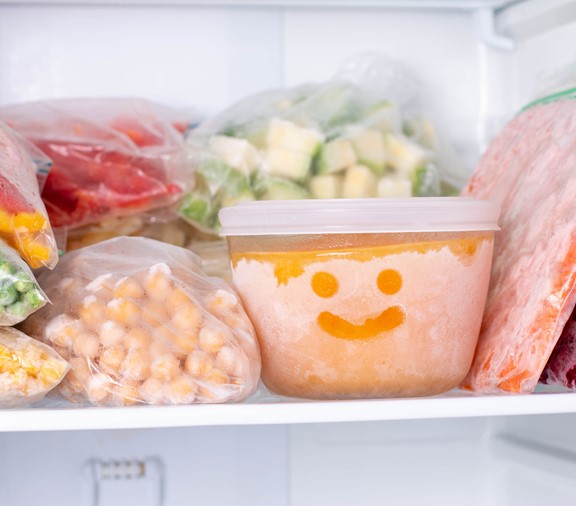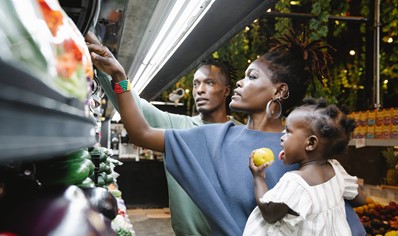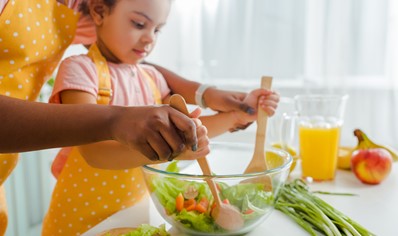
Spring and summer bring picnics and eating outdoors. It also means you can find great deals on your favorite fruits and vegetables.
However, hot days and nights can cause food to spoil more quickly. That can lead to throwing out food before you get to enjoy it. Eating spoiled food can also lead to food poisoning.
How can you protect your food—and your family—during the warmer months? Take a look at the tips below for some easy ways to make food last longer.
Check your refrigerator settings
Your refrigerator temperature should be 40 degrees or colder. The freezer temperature should be 0 degrees. To be sure, use a refrigerator thermometer, which you can buy for less than $10. Checking the temperature is especially important if you lose power for several hours.
Set up “zones” in your refrigerator and freezer
Your refrigerator is coldest in the bottom and the back. The door is the warmest area because, every time you open it, you swing the door into warmer room air.
Store milk and other dairy items at the back of the fridge, on a shelf near the middle or bottom. Store fruits and vegetables in the crisper drawers. What should you keep in the door? Ketchup, mustard, jelly, salad dressing, sauces, beverages and other items that don’t spoil quickly.
Use labels
How long has that jar of salsa been in the fridge? When did you open that box of soup? Make it easy to remember—use labels. Keep a marker or two in the kitchen. The first time you open a carton, jar or bottle, write the date on the outside of the package.
Choose the fresh foods that last longest
Berries can stay fresh up to seven days. Apples stay fresh for several weeks. Plan ahead so you can choose—and use—fruits and vegetables before they spoil. You can see a detailed list of storage tips for fruits, vegetables, dairy, grain and meat items on the Good Food, Good Move website.
Follow the two-hour (or one-hour) rule
Relaxing at the table after a meal? Enjoying a meal outside? Take a minute to move any leftovers from the table to the refrigerator. Food should not be left out on the table or counter for more than two hours.
If temperatures are 90 degrees or higher, put food—especially meat—back into the refrigerator within one hour. The warmer the air, the faster food can start to grow harmful bacteria.
Use canned vegetables, fruits and beans
Canned foods—soups, vegetables, beans, fruits, pasta and sauces--can be stored for several years. Best of all, they taste great and hold their nutrition. If you have the storage space, stock up when you find a good deal.
Buy frozen vegetables and fruits
After you shop the canned food aisle, check out the freezer section. Frozen fruit can last for up to eight months. Vegetables can be frozen for eight to twelve months. Buy frozen and you can enjoy your favorites all year long.
Cook extra and freeze leftovers
If you are making chili, soup or pasta, double the recipe and freeze the leftovers. You can freeze many recipes, with or without meat, for two to six months. Check the safe storage guidelines for dozens of frozen foods on the FoodSafety.gov website.
Plan ahead before you shop
The best way to save money on groceries and to prevent waste is to plan ahead. Make a list and check it twice. Before you buy something, make sure you have time to prepare it and plans to eat it—or room to store it.
Use the free FoodKeeper app
Want a quick and easy way to check food storage rules? The FoodKeeper app was developed by the United States Department of Agriculture to help individuals look up guidelines for a wide variety of food. The app is available for Android and Apple devices.
Need help finding food services near you?
Need help finding food services near you? Click here for a list of local resources like food pantries and meal programs.
Parkland Community Health Plan supports local food drives throughout the year – check our calendar for more information.



